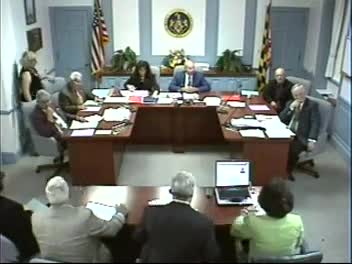Workforce housing task force presents findings: county median price out of reach for many workers
January 25, 2025 | St. Mary's County, Maryland
This article was created by AI summarizing key points discussed. AI makes mistakes, so for full details and context, please refer to the video of the full meeting. Please report any errors so we can fix them. Report an error »

A community task force convened by the St. Mary’s County Chamber of Commerce presented a final report Tuesday concluding that rising housing costs have pushed the median-priced home in the county out of reach for most local households.
The task force — co-chaired by Chris Longmore and John Perlet and drawing members from the housing authority, business and nonprofit sectors — reported the county median household income and housing prices indicate a large affordability gap: the February 2007 median single-family sale price cited in their analysis was about $337,500, while a household would need roughly $86,000 in annual income and limited recurring debt to afford that house under typical financing assumptions. The group reported approximately 61% of county households fall below the income needed to purchase the median-priced home.
Why it matters: Task force members said the gap threatens the county’s ability to attract and retain workers (school staff, health care, public safety and others) and recommended a mix of near- and longer-term measures.
Key findings and recommendations
- Preserve existing “traditional neighborhoods” (defined as subdivisions built before 1985 with 80+ lots). A windshield survey of 35 such communities found most in good condition but identified four with infrastructure or property problems; the task force recommends stronger, sustained CIP funding for a neighborhood‑preservation program and coordinated utility/infrastructure upgrades.
- Create new supply through zoning and regulatory changes: the group recommended revising definitions and density incentives in the zoning ordinance to allow targeted workforce units (45%–110% of median income), re-examining the 50% open-space requirement in certain development districts to enable more efficient land use for housing, and exploring waivers of impact fees or APF (adequate public facilities) constraints for small numbers of workforce units where appropriate.
- Increase community awareness and coordination: propose a dedicated staff position (a workforce-housing coordinator) to organize neighborhoods, identify existing state/federal programs, coordinate with the Housing Authority and work with employers to map needs.
- Create an ongoing funding source: proposed mechanisms include dedicating a portion of transfer-tax revenue to workforce housing, accepting cash-in-lieu from developers who receive bonus density, and studying the creation of a private foundation to raise philanthropic support.
Task force members stressed the recommendations are complementary — preserving existing affordable stock and building targeted new units — and said they will meet quarterly to follow up. Commissioners thanked the task force and flagged several follow-ups (coordination with the Housing Authority, consideration of mobile/modular housing options and CIP funding for deteriorated county-owned properties).
The task force — co-chaired by Chris Longmore and John Perlet and drawing members from the housing authority, business and nonprofit sectors — reported the county median household income and housing prices indicate a large affordability gap: the February 2007 median single-family sale price cited in their analysis was about $337,500, while a household would need roughly $86,000 in annual income and limited recurring debt to afford that house under typical financing assumptions. The group reported approximately 61% of county households fall below the income needed to purchase the median-priced home.
Why it matters: Task force members said the gap threatens the county’s ability to attract and retain workers (school staff, health care, public safety and others) and recommended a mix of near- and longer-term measures.
Key findings and recommendations
- Preserve existing “traditional neighborhoods” (defined as subdivisions built before 1985 with 80+ lots). A windshield survey of 35 such communities found most in good condition but identified four with infrastructure or property problems; the task force recommends stronger, sustained CIP funding for a neighborhood‑preservation program and coordinated utility/infrastructure upgrades.
- Create new supply through zoning and regulatory changes: the group recommended revising definitions and density incentives in the zoning ordinance to allow targeted workforce units (45%–110% of median income), re-examining the 50% open-space requirement in certain development districts to enable more efficient land use for housing, and exploring waivers of impact fees or APF (adequate public facilities) constraints for small numbers of workforce units where appropriate.
- Increase community awareness and coordination: propose a dedicated staff position (a workforce-housing coordinator) to organize neighborhoods, identify existing state/federal programs, coordinate with the Housing Authority and work with employers to map needs.
- Create an ongoing funding source: proposed mechanisms include dedicating a portion of transfer-tax revenue to workforce housing, accepting cash-in-lieu from developers who receive bonus density, and studying the creation of a private foundation to raise philanthropic support.
Task force members stressed the recommendations are complementary — preserving existing affordable stock and building targeted new units — and said they will meet quarterly to follow up. Commissioners thanked the task force and flagged several follow-ups (coordination with the Housing Authority, consideration of mobile/modular housing options and CIP funding for deteriorated county-owned properties).
View the Full Meeting & All Its Details
This article offers just a summary. Unlock complete video, transcripts, and insights as a Founder Member.
✓
Watch full, unedited meeting videos
✓
Search every word spoken in unlimited transcripts
✓
AI summaries & real-time alerts (all government levels)
✓
Permanent access to expanding government content
30-day money-back guarantee

